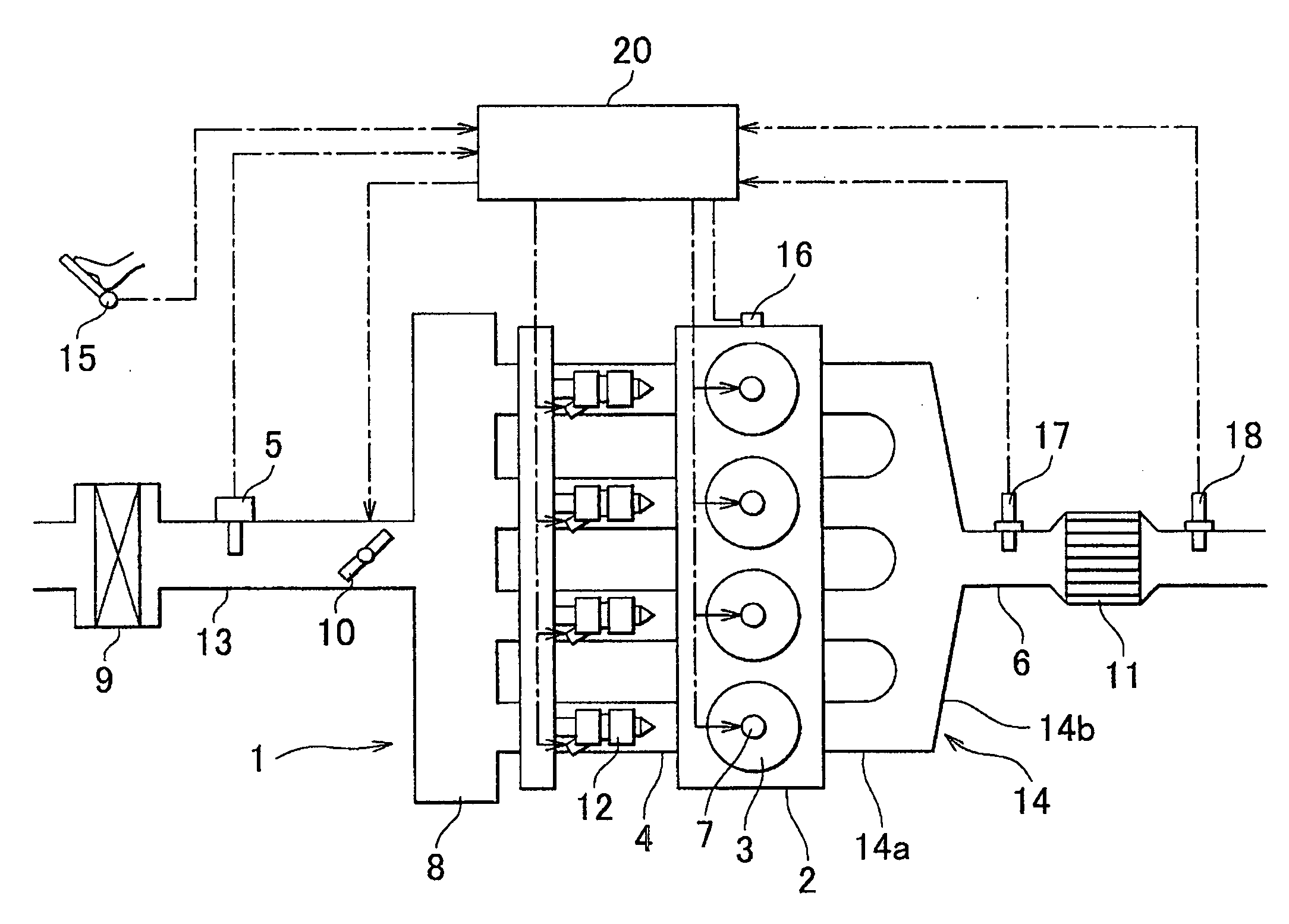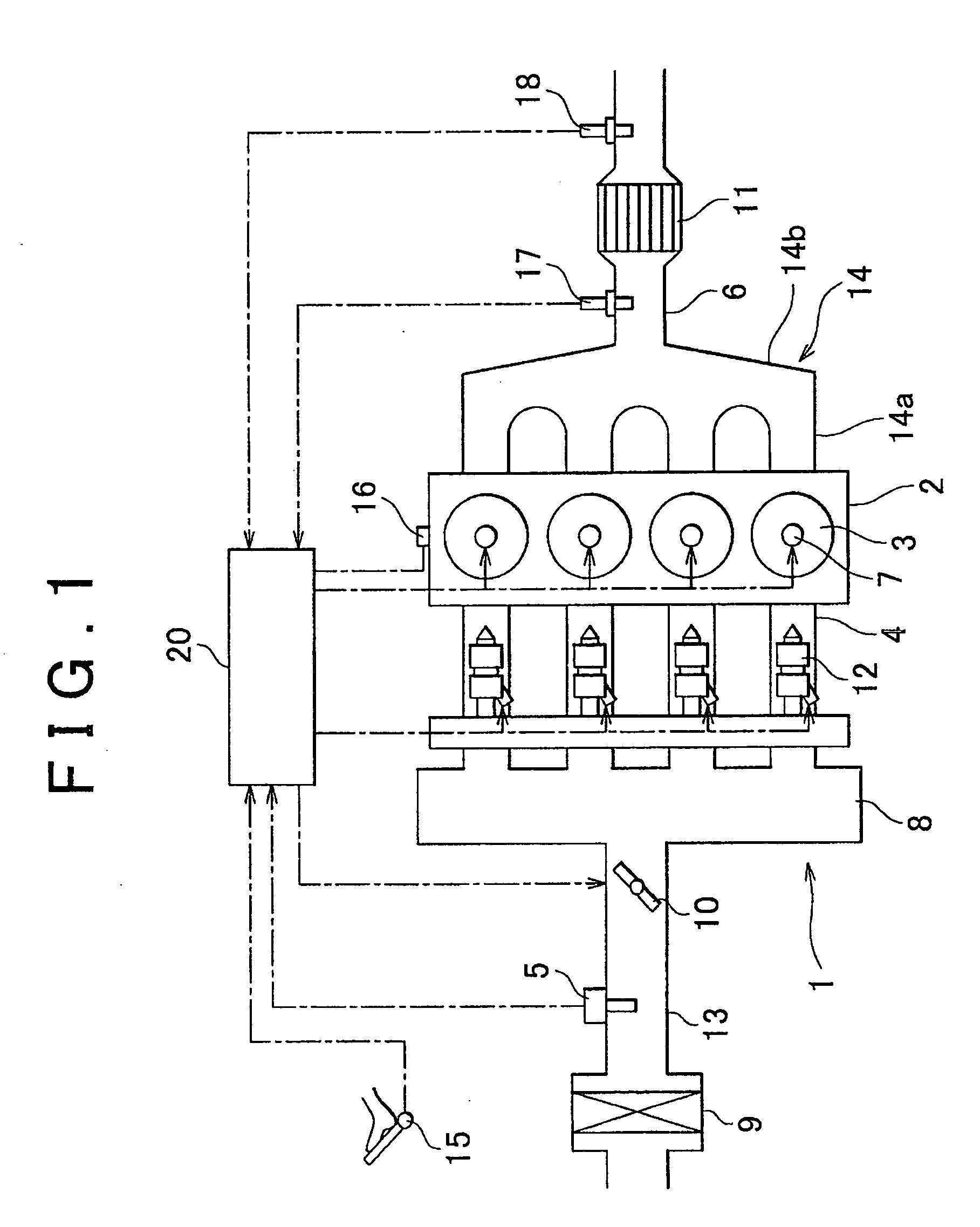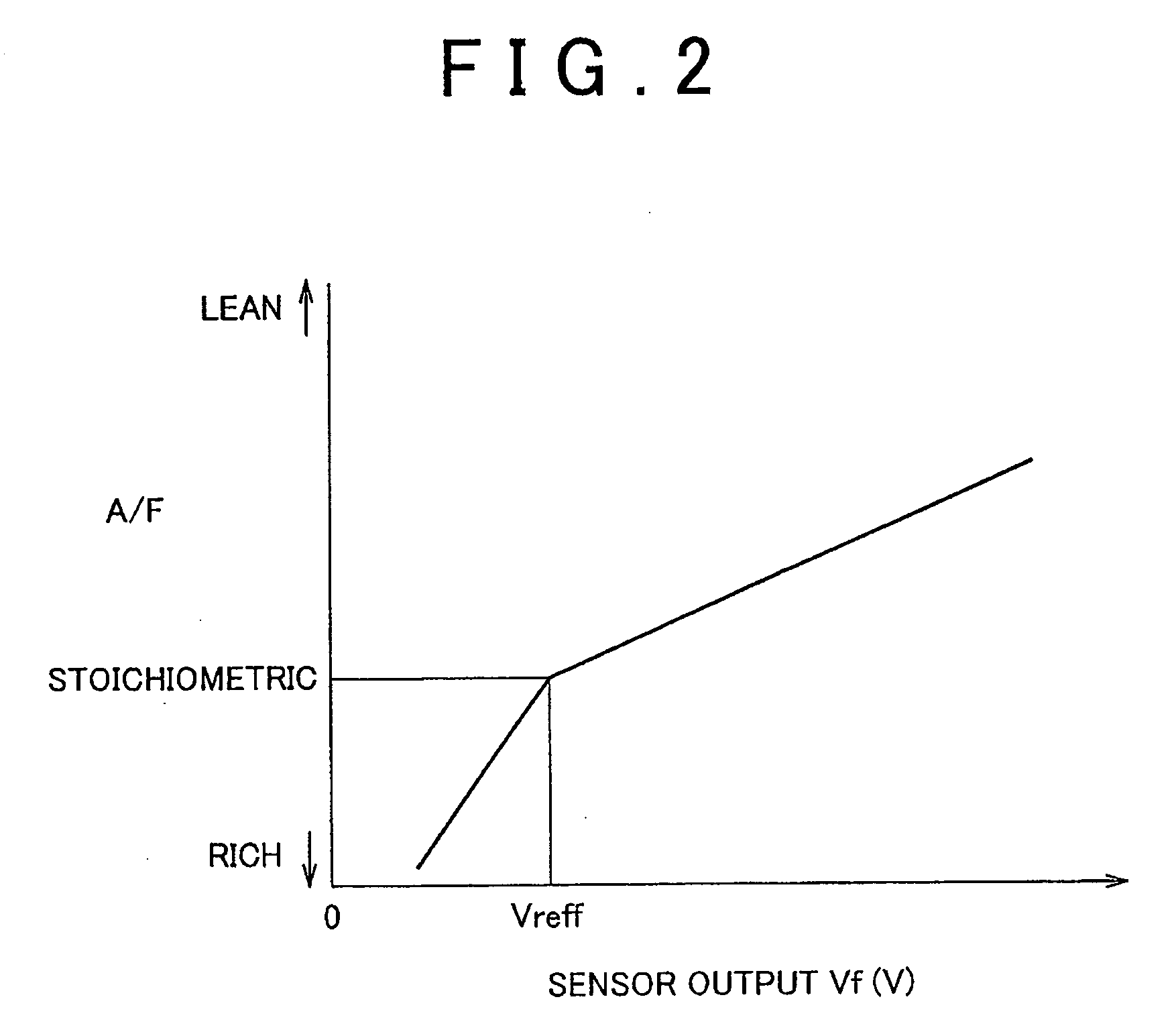Apparatus and method for detecting abnormal air-fuel ratio variation among cylinders of multi-cylinder internal combustion engine
a multi-cylinder internal combustion engine and air-fuel ratio technology, applied in the direction of electrical control, process and machine control, instruments, etc., can solve the problems of apparatus not being able to detect sensor failure to function properly, exhaust emission deterioration, etc., to achieve accurate detection of abnormal air-fuel ratio variation
- Summary
- Abstract
- Description
- Claims
- Application Information
AI Technical Summary
Benefits of technology
Problems solved by technology
Method used
Image
Examples
first embodiment
[0106]First, a first embodiment will be described. As shown in FIG. 9, a malfunction has occurred in the injector of only the cylinder #1, and the air-fuel ratio in the cylinder #1 is richer than the air-fuel ratio in the other cylinders #2 to #4 by a large amount. In this case, because the main air-fuel ratio feedback control is executed, the total exhaust gas air-fuel ratio that is obtained after the exhaust gas from all the cylinder join together is controlled to a value around the stoichiometric air-fuel ratio, as shown in (A) of FIG. 9. That is, the catalyst upstream-side sensor output Vf is around the stoichiometric-corresponding sensor output Vreff. However, the air-fuel ratio in the cylinder #1 is richer than the stoichiometric air-fuel ratio by a large amount, and the air-fuel ratio in the cylinders #2 to #4 is leaner than the stoichiometric air-fuel ratio. Therefore, the total exhaust gas air-fuel ratio is around the stoichiometric air-fuel ratio. In addition, a large amou...
second embodiment
[0121]Next, a second embodiment will be described. As described with reference to FIGS. 6 to 8, in the sub-air-fuel ratio feedback control, the catalyst downstream-side sensor learned value ΔVrg and the sub-air-fuel ratio correction amount Kr are learned or updated at predetermined time intervals (that is, at predetermined update rate). If abnormal air-fuel ratio variation among the cylinders has occurred due to, for example, a malfunction in the injector of part of the cylinders, the catalyst downstream-side sensor output Vr continuously exhibits a lean value. Therefore, the catalyst downstream-side sensor learned value ΔVrg and the sub-air-fuel ratio correction amount Kr are large positive values with which the air-fuel ratio that is leaner than the stoichiometric air-fuel ratio by a large amount is corrected to the stoichiometric air-fuel ratio.
[0122]This is shown in FIG. 12. FIG. 12 is a graph showing the result of a test in which the relationship between the deviation rate when...
third embodiment
[0137]Therefore, in the third embodiment, as shown in FIG. 14, a target air-fuel ratio that is used in the main air-fuel ratio feedback control is forcibly set to a value (e.g. 14.1) that is richer than the stoichiometric air-fuel ratio which is the reference value, and forcible rich feedback control is executed as the main air-fuel ratio feedback control. Then, if the catalyst downstream-side sensor 18 continuously detects an exhaust gas air-fuel ratio, which is leaner than the stoichiometric air-fuel ratio, it is determined that abnormal air-fuel ratio variation among the cylinders has occurred. The target air-fuel ratio that is used in the sub-air-fuel ratio feedback control is maintained at the stoichiometric air-fuel ratio.
[0138]FIG. 15 shows a routine for determining whether abnormal air-fuel ratio variation among the cylinders has occurred according to the third embodiment. The routine is mostly the same as the routine according to the first embodiment shown in FIG. 11. The r...
PUM
 Login to View More
Login to View More Abstract
Description
Claims
Application Information
 Login to View More
Login to View More - R&D
- Intellectual Property
- Life Sciences
- Materials
- Tech Scout
- Unparalleled Data Quality
- Higher Quality Content
- 60% Fewer Hallucinations
Browse by: Latest US Patents, China's latest patents, Technical Efficacy Thesaurus, Application Domain, Technology Topic, Popular Technical Reports.
© 2025 PatSnap. All rights reserved.Legal|Privacy policy|Modern Slavery Act Transparency Statement|Sitemap|About US| Contact US: help@patsnap.com



